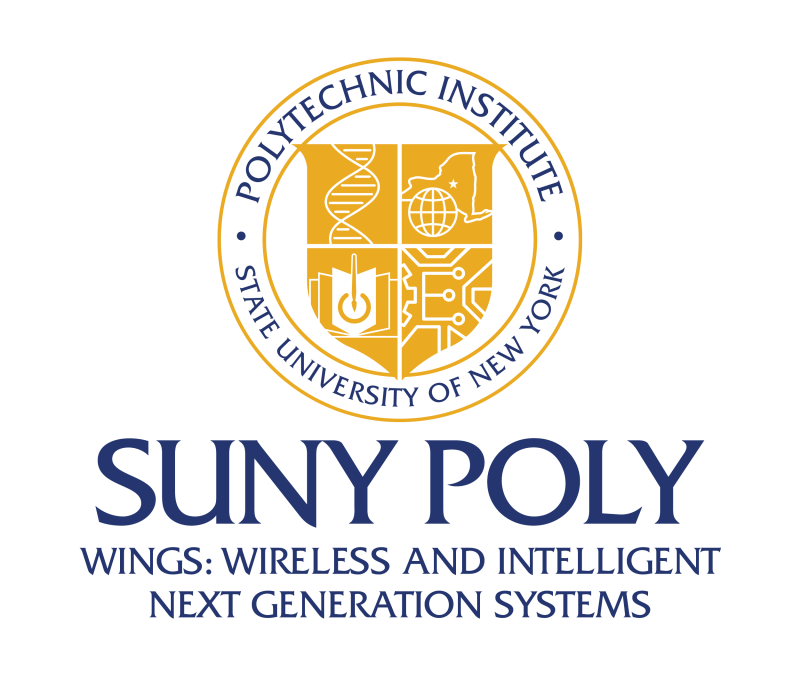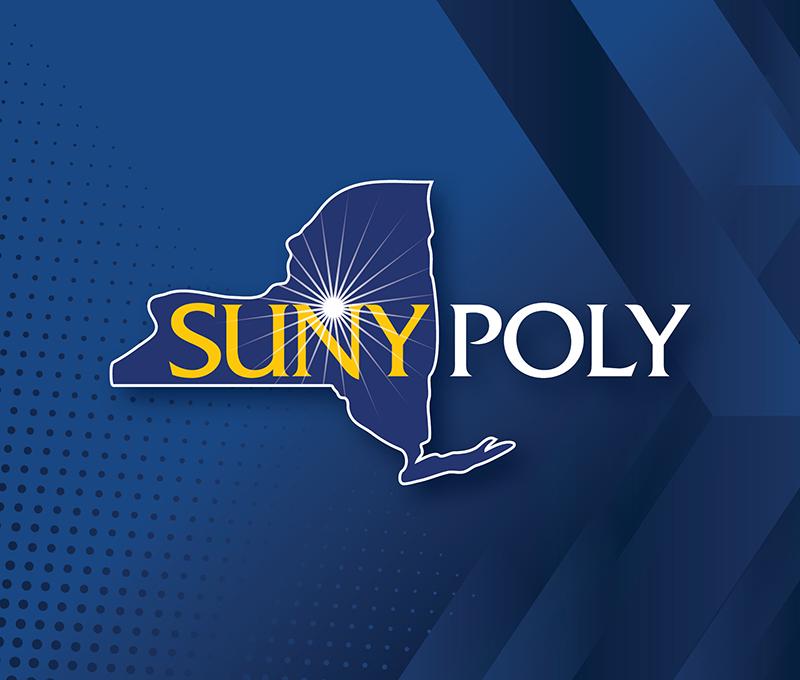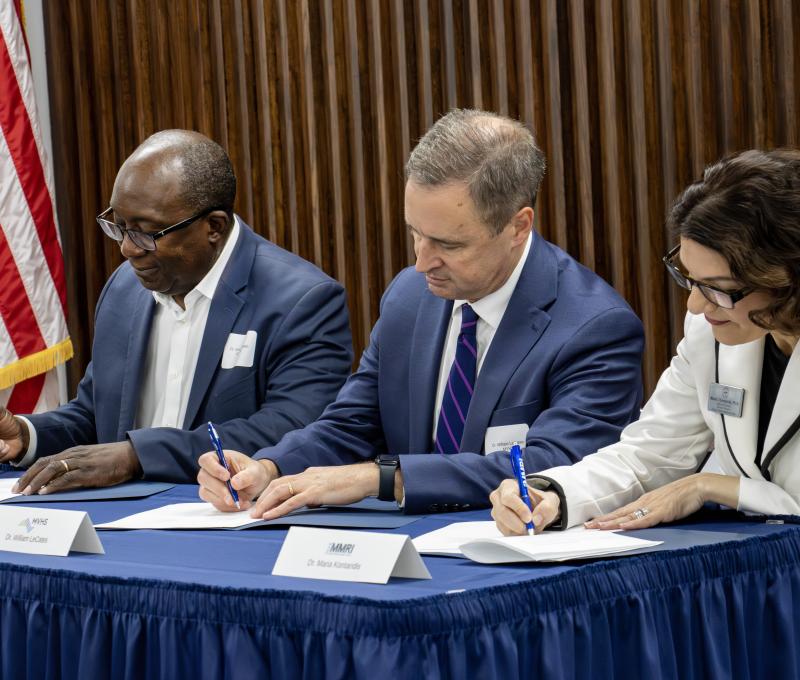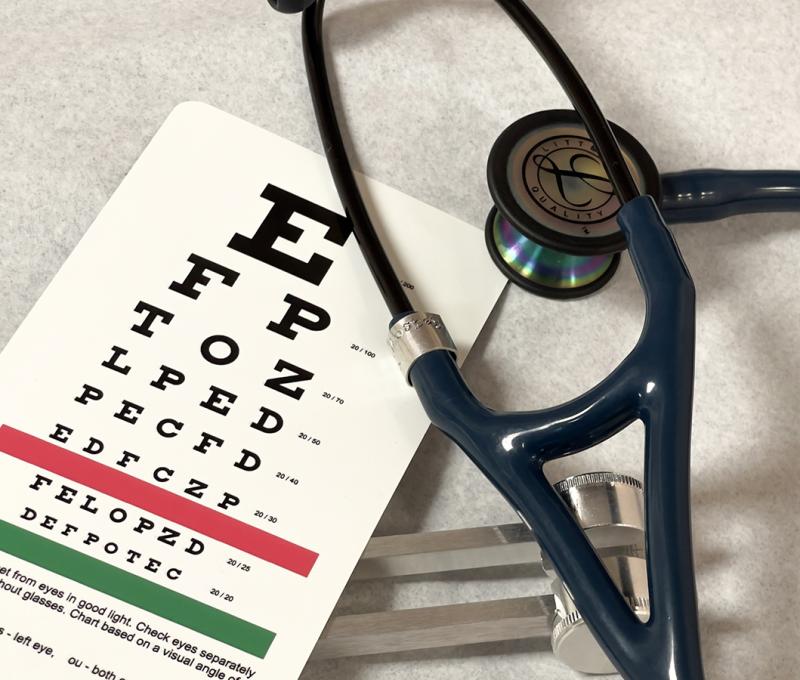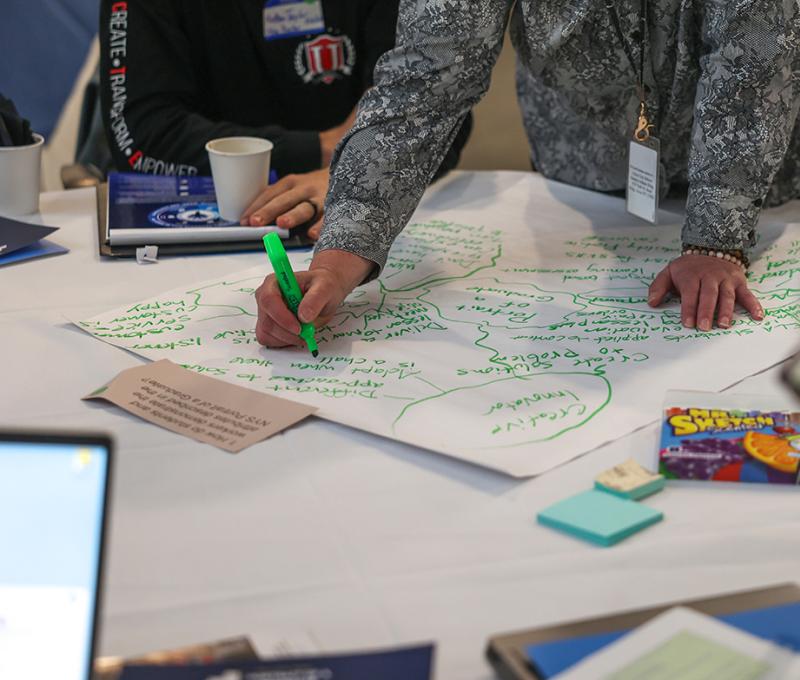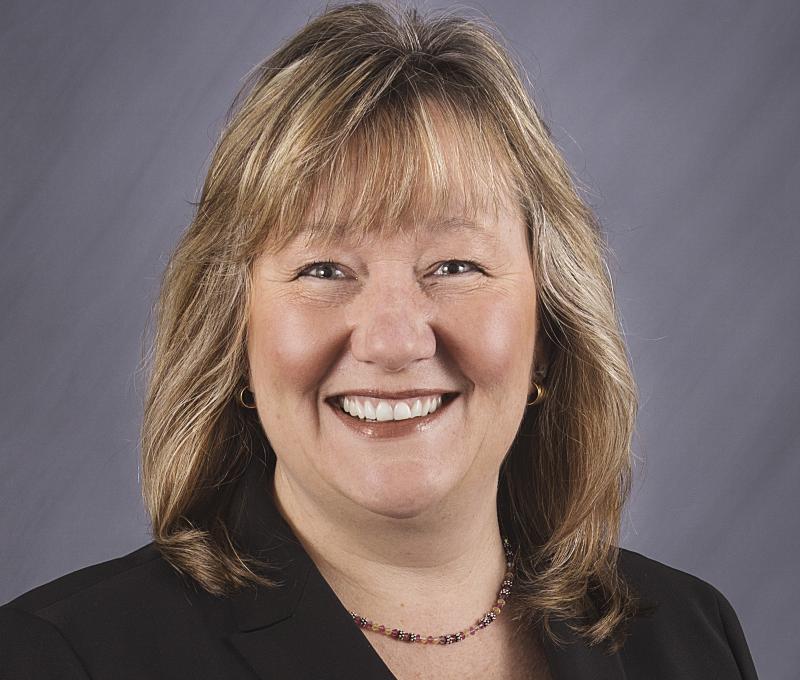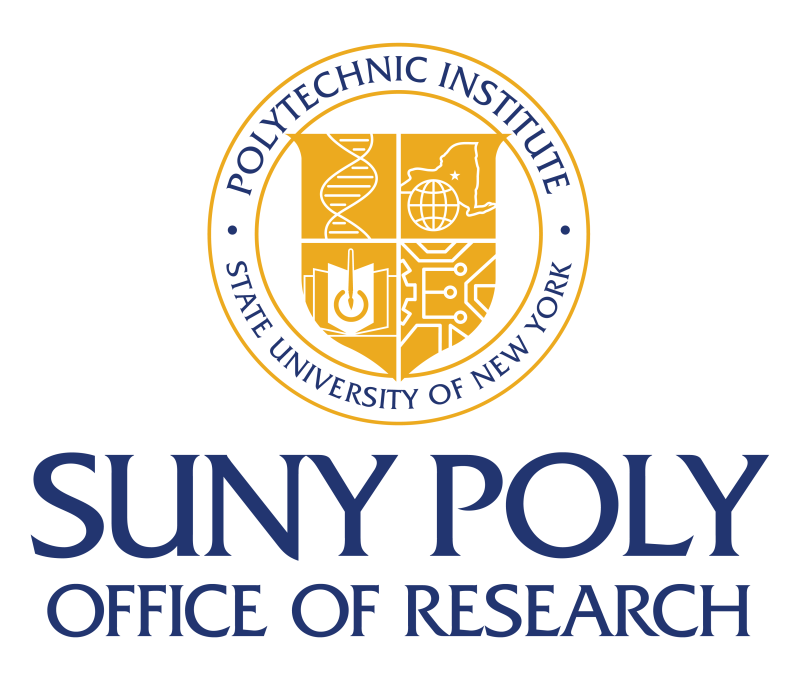SUNY News Release: SUNY, Griffiss Institute, and Air Force Research Laboratory (AFRL) Partner to Connect and Advance New York’s Quantum Science and Engineering Capacity and Community
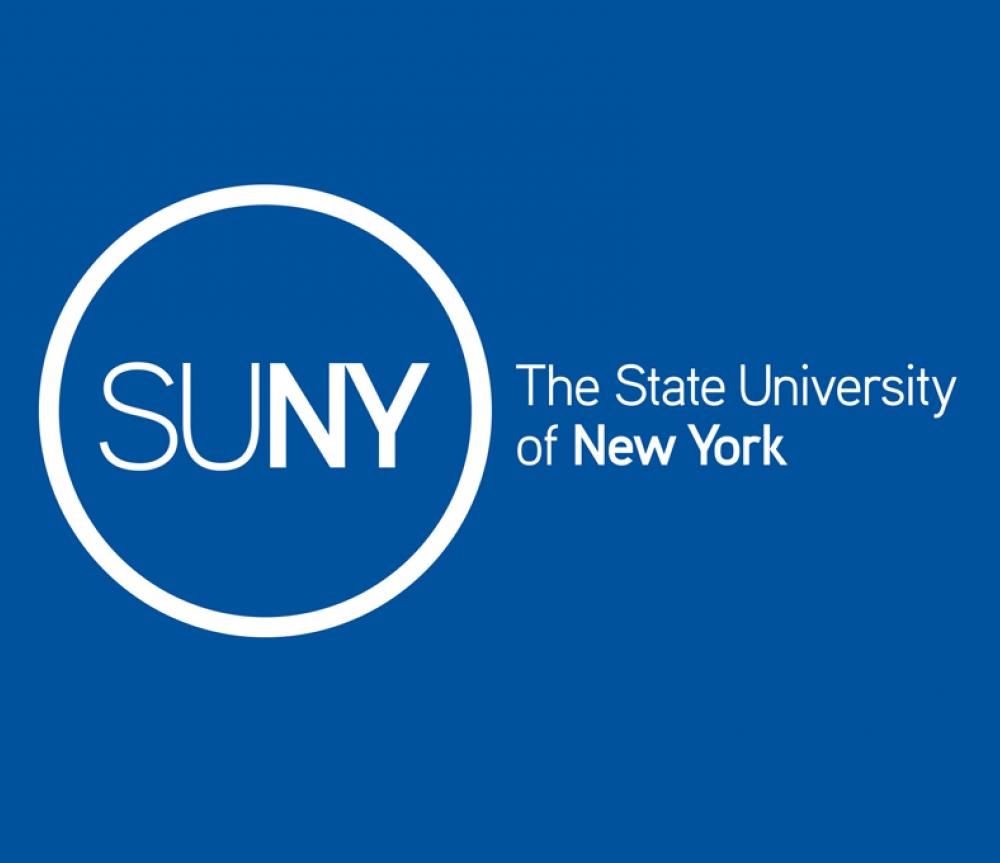
Two-Day Workshop Highlights Quantum-Focused Collaborative Opportunities to Expand Academic, Research, and Commercialization Opportunities Across New York State
For Immediate Release: Thursday, Dec. 06, 2018
Contact: Holly Liapis; Holly.Liapis@suny.edu; 518-320-1311
Rome, NY – Experts in quantum science and engineering, representing academia, government, and industry across New York State, convened on November 29 and 30 at Griffiss Institute to take part in an intensive, two-day Quantum Science and Engineering Workshop. Hosted by The State University of New York, Griffiss Institute, and Air Force Research Laboratory’s Information Directorate, this inaugural workshop brought together leading scientists, engineers, industry executives, and policymakers to develop a comprehensive strategy for interdisciplinary collaboration in quantum information science research, innovation, and workforce development.
“Growing and maintaining our nation’s leadership in quantum science is increasingly important to the future security and economy of our society. On SUNY campuses our faculty and students are conducting transformational research in quantum science and engineering, which holds the potential to address much more complex issues than what we can tackle today – from highly secured communication to more effective drug discoveries,” said SUNY Chancellor Kristina M. Johnson. “We are pleased to have provided the catalyst for further exploration of this critical area of study, and we thank Griffiss Institute and the Air Force Research Laboratory for their partnership in making this event possible.”
“This Quantum Science and Engineering Workshop provided a valuable platform to explore SUNY and our strategic partners’ collective, unparalleled capacity that make us a natural leader to deliver quantum solutions and develop a quantum-smart workforce,” said Dr. Grace Wang, SUNY Senior Vice Chancellor for Research and Economic Development. “We are excited to look toward a bright collaborative future enabling research and innovation in quantum information science and engineering, alongside our partners at the Air Force Research Laboratory, Griffiss Institute, and other globally recognized collaborators across New York State, as we catalyze next-generation technologies, spur exciting opportunities for students and businesses, and further bolster the economic vibrancy of our communities.”
"The Griffiss Institute is privileged to host this diverse representation from the quantum science community, and is thankful to the many regional and national participants from industry, academia and government, who have chosen to contribute their insights,” said William Wolf, Griffiss Institute President. “We’re hopeful that many new and fruitful collaborations will be created and contribute to the development of a ‘quantum smart’ workforce, and substantial opportunities for economic development."
The SUNY system enables countless collaborative possibilities in quantum information science and engineering, with a network of world-renowned researchers and pioneering R&D facilities, tools, and capabilities. SUNY’s leading research campuses in this area include Binghamton University, University at Buffalo, University at Albany, Stony Brook University and its immersive partnership with Brookhaven National Laboratory (BNL), and SUNY Poly. All of this work is augmented by the SUNY Research Foundation that supports research programs in a single administrative interface for contracting, compliance, stewardship, and management of all SUNY intellectual property.
At University at Buffalo, researchers in Materials Design and Innovation (MDI) are using novel computational and experimental approaches for the discovery and design of new quantum materials. MDI hosts the atom probe tomography facility—the only one in New York State that can image hundreds of millions of atoms in three dimensions and identify the chemistry of each atom.
Stony Brook University, with its long-standing partner, BNL, is accelerating the development of scalable quantum memories based on solid-state and atomic physics. Using photons to communicate and atoms as nodes to store and process quantum information, the Quantum Information Technology Group develops single photon sources tuned to atomic transitions and designs quantum transistors and logic-gates using electromagnetically induced transparency and cold atoms inside optical cavities. BNL is also home to one of the newest and most advanced synchrotron facilities in the world—NSLS-II—which enables the study of material properties and functions with nanoscale resolution and exquisite sensitivity by providing world-leading capabilities for X-ray imaging and high-resolution energy analysis.
SUNY Poly, a globally recognized innovation hub with locations in Albany and Utica, including a photonics-focused test, assembly, and packaging facility in Rochester, enables researchers to leverage more than 136,000 square feet of cleanroom space with a fully integrated 300mm wafer computer chip prototyping and demonstration line. SUNY Poly supports a wide-range of research, development, and commercialization efforts, spearheading the Air Force Research Laboratory-sponsored American Institute for Manufacturing Integrated Photonics, and providing capabilities for quantum solutions as well as supporting the development of a quantum-smart workforce. With research efforts related to chips for neuromorphic applications, the fabrication of transmon qubits, and technologies with future applications in quantum computing, quantum communications, quantum sensing, superconducting digital electronics, and superconducting optoelectronics for neuromorphic computing, SUNY Poly offers a unique environment for R&D and technology demonstration in these burgeoning high-tech areas.
The University at Albany is pushing the boundaries of our current understanding of quantum in the pursuit of a reconstruction of quantum theory to trace its physical ideas, to physical principles, to mathematical structures. Researchers at UAlbany’s Department of Physics are developing protocols that will optimize fundamental operations at the interface of quantum optics and quantum information processing employing solid state emitters as qubits. They are also studying non-equilibrium quantum systems to benchmark developments of quantum simulators using ultracold atoms in optical lattices. Researchers within the College of Engineering and Applied Sciences are working on distributed networking protocols for future quantum networks. They are also looking at the quantum algorithms for massive scale parallel signal processing required for distributed Massive MIMO (Multiple Input and Multiple Output) wireless systems in real-time.
At Binghamton University, The Center for Energy-Smart Electronic Systems, a National Science Foundation Industry/University Cooperative Research Center (I/UCRC), works in partnership with government, industry and academia to develop systematic methodologies for efficiently operating electronic systems, including data centers, by controlling resources and managing workloads to achieve optimal energy consumption—a critical issue for quantum devices and systems.
In total, SUNY’s research and economic development portfolio includes $1.6 billion in annual R&D expenditures, over 1,522 patents, nearly 700 technology licensing partnerships, and 110 operational startups.
Additional information on Quantum Science and Engineering Workshop is available here.
About Griffiss Institute
The Griffiss Institute was established in 2002, by the State of New York, as an independent 501(c)(3) entity governed by a Board of Directors. The primary role of the Griffiss Institute is to advocate and facilitate the co-operation of private industry, academia, and the Air Force Research Laboratory Information Directorate (AFRL/RI), in developing solutions to critical cyber security problems. Another prime role is to build upon technologies under development at the AFRL/RI to further strengthen our nation’s security. By partnering AFRL with private industry and academia, the Griffiss Institute is able to facilitate and grow the technology base of the Upstate New York region. The Griffiss Institute is focused on providing an environment conducive to the growth of technology and ideas, by creating a collaborative research environment accessible to AFRL, business, and academia. The goal is to foster research leading to new solutions in information sciences and spinning out new business opportunities, locally and nationally. To learn more, please visit www.griffissinstitute.org.
About Air Force Research Laboratory Information Directorate
With headquarters at Rome, NY, the Air Force Research Laboratory Information Directorate (AFRL/RI) research vector develops novel and affordable Command, Control, Communications, Computing, Cyber, and Intelligence (C4I) technologies. RI is recognized as a national asset and leader in C4I. Refining data into information and knowledge for decision makers to command and control forces is what AFRL/RI does. This knowledge gives our air, space, and cyberspace forces the competitive advantage needed to protect and defend this great nation. Learn more at www.wpafb.af.mil/afrl/ri.
About The State University of New York
The State University of New York is the largest comprehensive system of higher education in the United States, with 64 college and university campuses located within 30 miles of every home, school, and business in the state. As of Fall 2017, more than 430,000 students were enrolled in a degree program at a SUNY campus. In total, SUNY served nearly 1.4 million students in credit-bearing courses and programs, continuing education, and community outreach programs in the 2016-17 academic year. SUNY students and faculty across the state make significant contributions to research and discovery, resulting in $1 billion of externally sponsored activity each year. There are 3 million SUNY alumni worldwide, and one in three New Yorkers with a college degree is a SUNY alum. To learn more about how SUNY creates opportunity, visit www.suny.edu.
###

